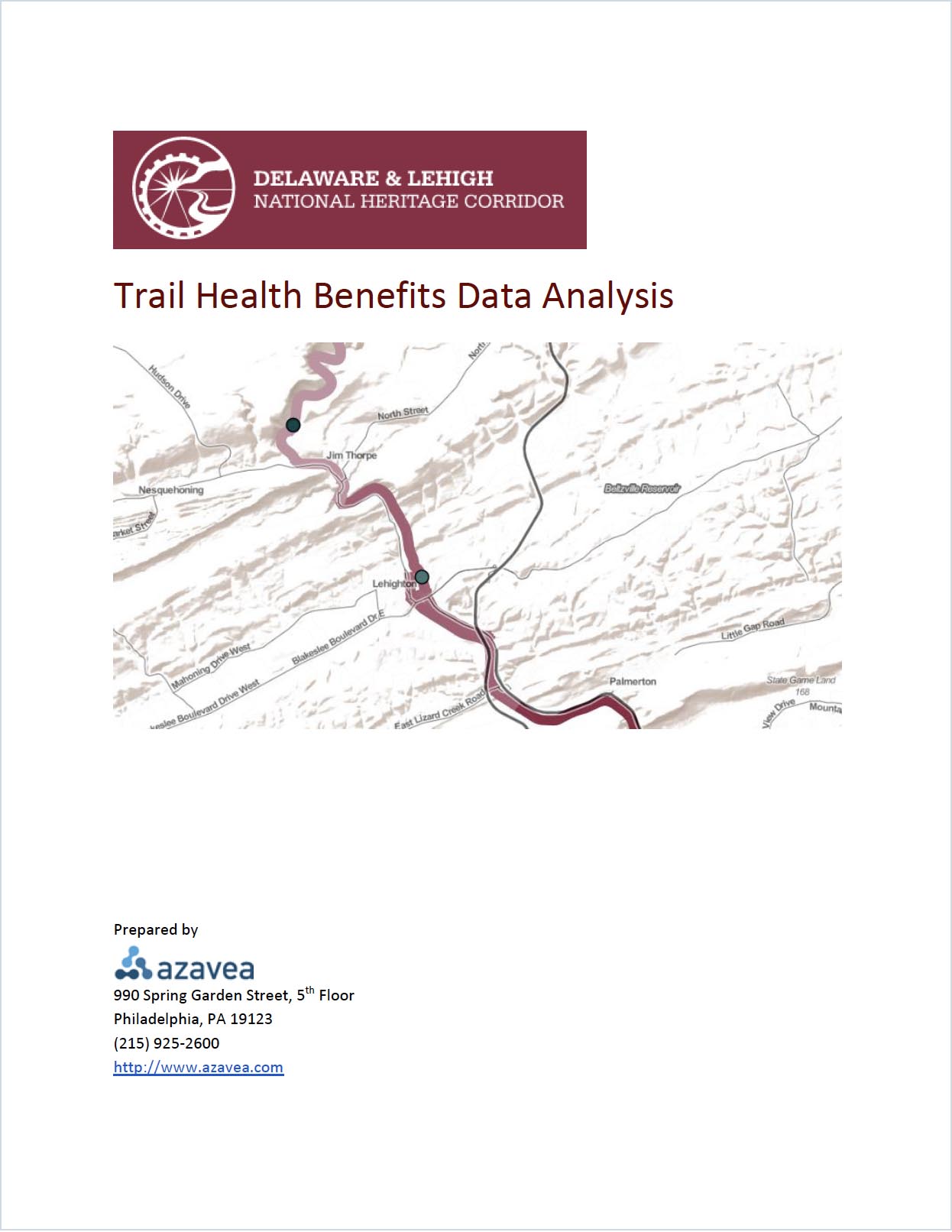What’s inside
The trail health benefits analysis was completed in partnership with the Delaware and Lehigh Valley National Heritage Corridor, a national heritage area in five counties in Eastern Pennsylvania from Luzerne to Bucks County.
Azavea performed data analysis to calculate health benefits, statistical summaries, and breakdowns by different categorizations of data from the organization’s “Get Your Tail On the Trail” (GYTOT) health incentive program. From 2017 to 2019 over 7,000 users reported 370,000+ activities. They recorded time, distance, mode of activity, and a text-based location description.
To start, Azavea cleaned and categorized the data by Location, Mode, Trail and Trail segment. From there, we used a variety of statistical tools and packages in R to summarize it. In order to calculate a caloric expenditure for the trail, its segments, user modes and locations, we joined health survey information from users.
Ultimately, Azavea found that users of the GYTOT program during this time period burned an estimated 213,594,448 calories, with an average of 572 calories burned per activity. The most popular activities, by far, are walking and biking. Using the GYTOT data as a source, we also combined daily trail counts from twelve locations. This allowed us to estimate calories burned on the Delaware and Lehigh (D&L) Trail. Users burned an estimated total of 195 million calories a year (535,514 calories daily) on the D&L Trail. The Bethlehem-Easton segment of the trail shows the highest amount of calories burned (36 million). However, users of the Wilkes-Barre – White Haven segment burn more calories per trail activity (960 calories) on average.

